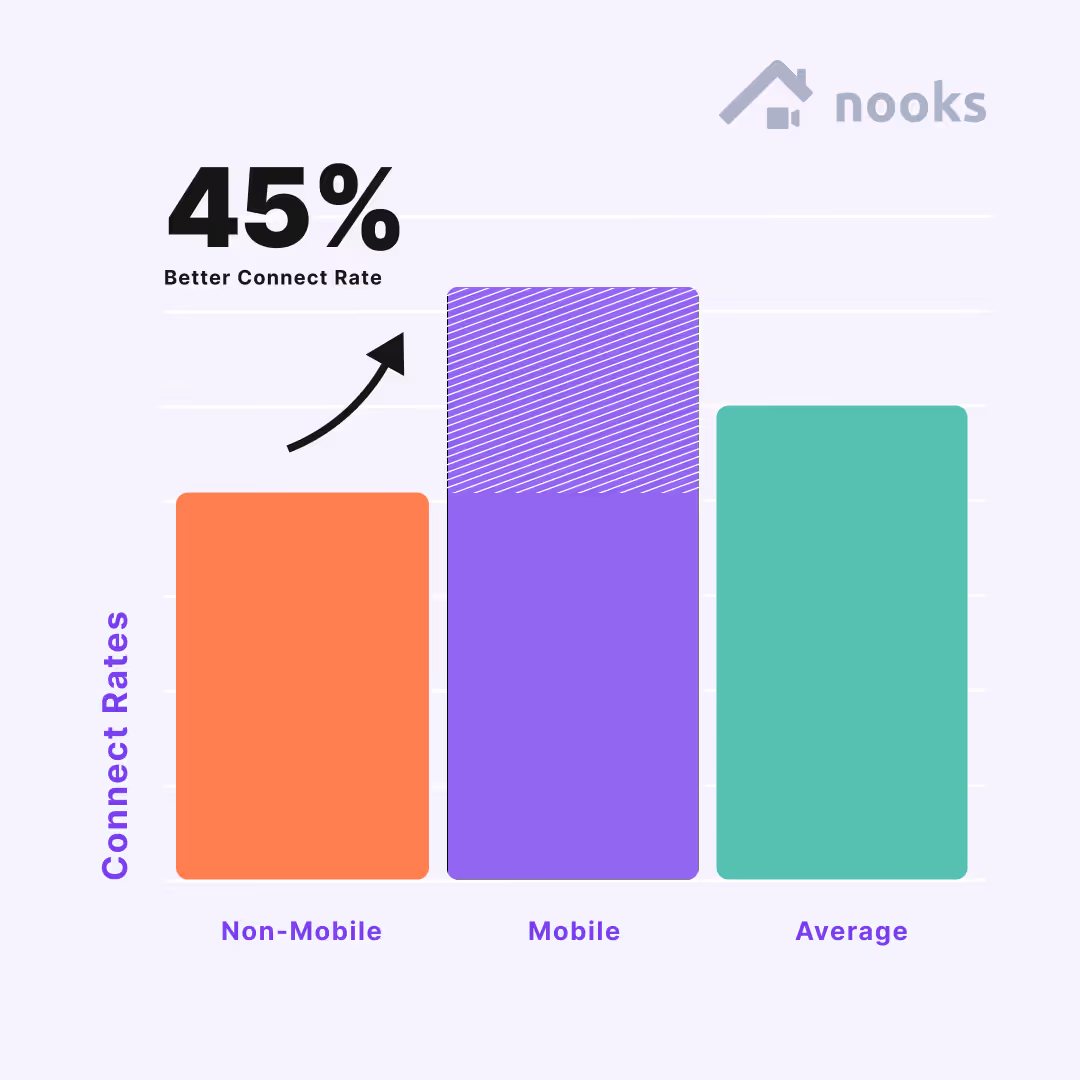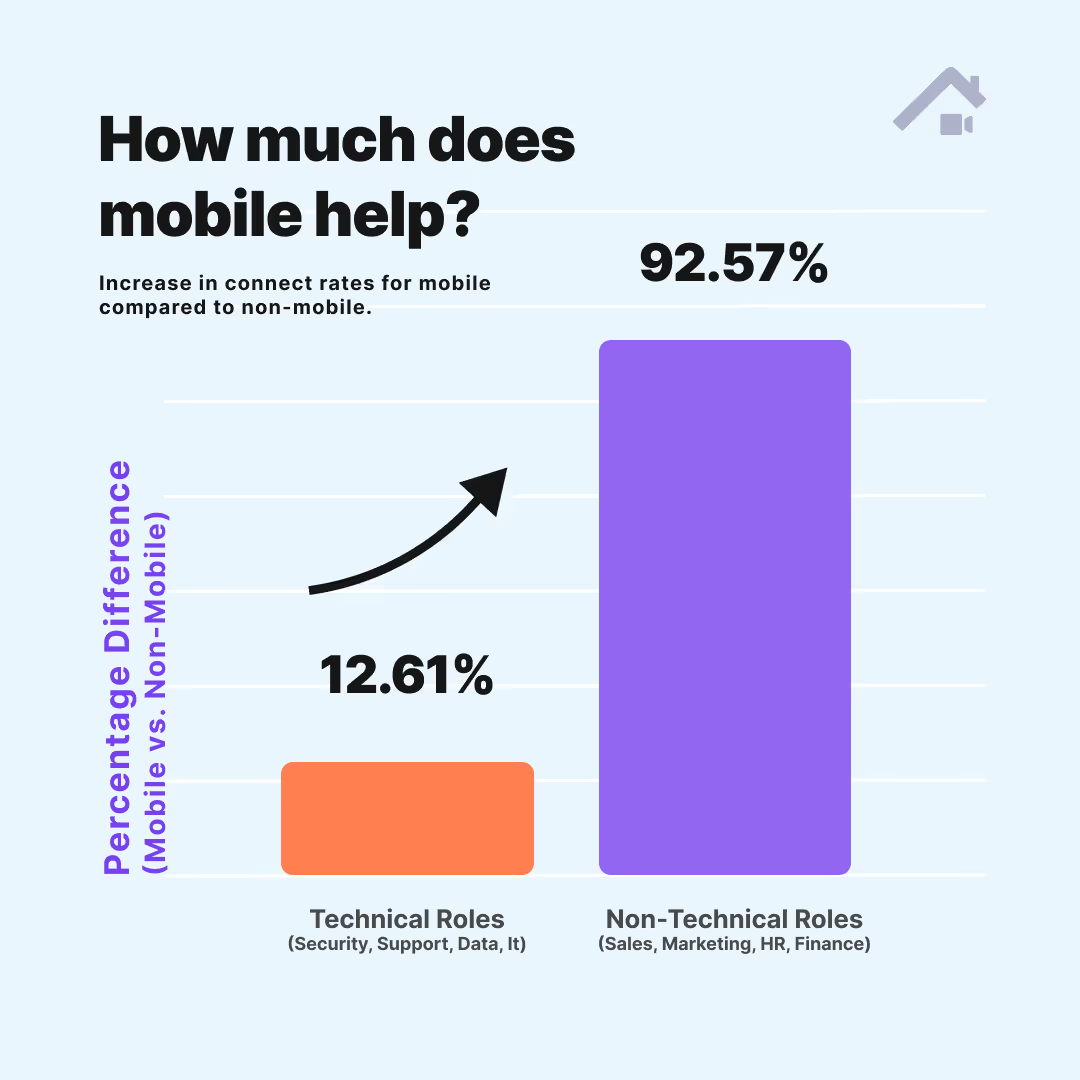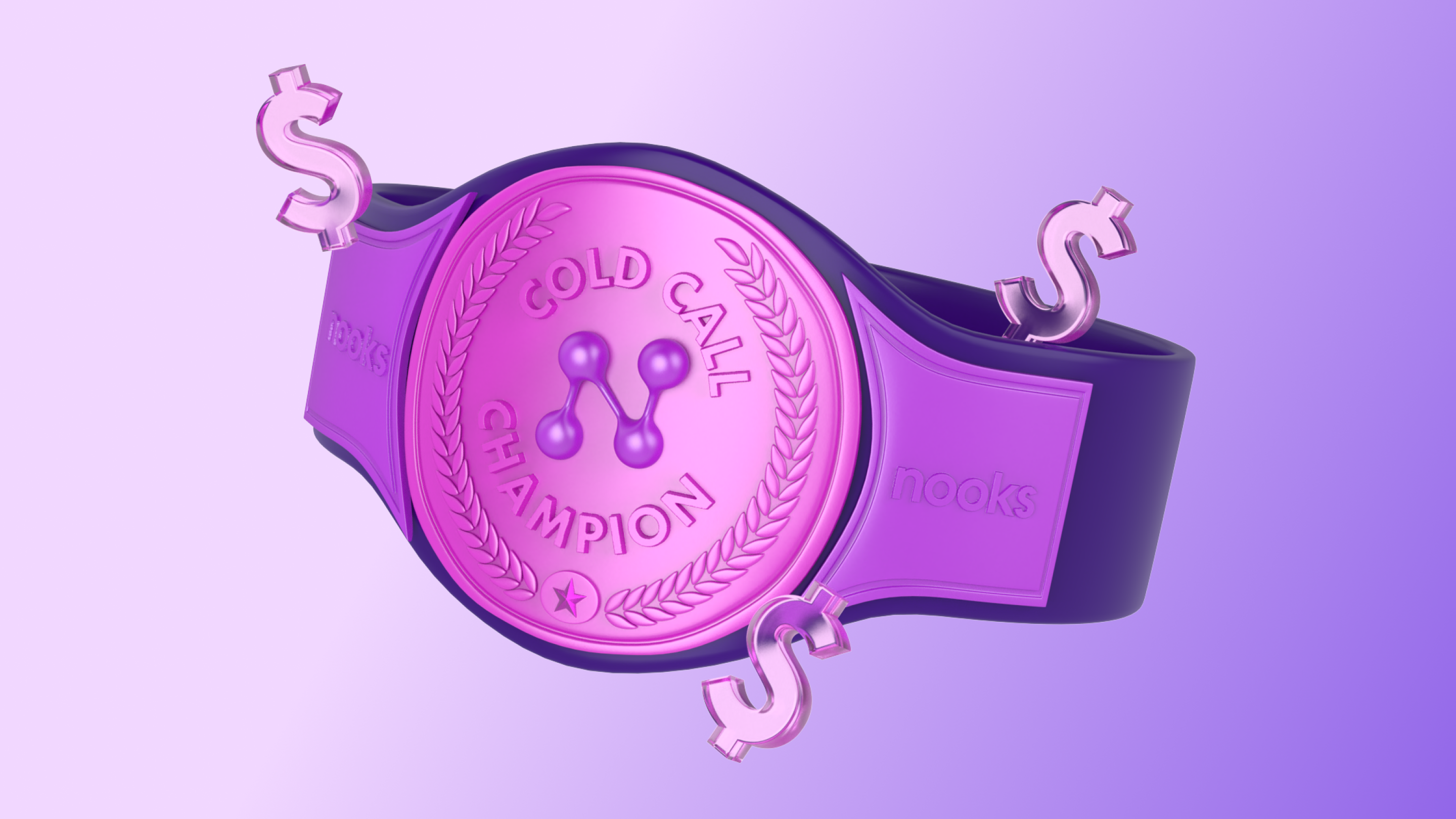We looked at 3M calls - here’s who picks up the most

.avif)
If you’re a sales leader or a member of a sales team, chances are that you’ve heard every excuse in the book. “People don’t answer in the summer.”“It’s hard to book meetings in the Winter.” And our favorite, “Cold calling just doesn’t work anymore.”
We wanted to know which complaints are nonsense and which ones are worth paying attention to, so we ran data from nearly 3 million dials to see what we could find. For this analysis, we wanted to uncover the facts behind the most common and perhaps most debated cold calling complaint, “People just don’t answer their cell phones anymore.”
We compared mobile and non-mobile connect rates with connect-to-meeting rates and broke it down into marketing, security, IT, data, support, HR, sales and finance personas to discover their relationship with their phones and how it affects your sales efforts.
Here’s what we found.
Mobile connect rates are significantly higher.
Next time you hear someone say they’ll never book a meeting with a seller that dials their cell, you can be confident the data doesn’t support that.
The average connect rate for mobile numbers is 45% higher than non-mobile numbers and those conversations convert to meetings at an 18% percent higher rate. So when it comes to making decisions on where your sales team should focus, the answer is clear - mobile calls are far from dead.
This highlights the importance of having resources to hunt down correct mobile numbers and remove bad ones. Oh, and never listen to anyone who says calling cell phones doesn’t work. Let your competitors believe that.


Mobile vs. non-mobile impacts some verticals more than others.
Finance roles are 148% more likely to pick up on mobile than non-mobile. Marketing is 128% more likely to pick up on mobile. HR follows behind at 56% and Sales at 38%. If you sell to these personas, it’s definitely worth the investment to hunt down clean contact data for your call blitz sessions.
On the other hand, dialing mobile vs non-mobile numbers seems to have less of an impact for technical roles such as IT, Security and Support. So if you sell to those industries, mobile still is better, but it might make sense to continue dialing those office lines.
Note: Marketing has the lowest overall connect rate but still shows a 128% variance because their non-mobile rate is significantly lower than mobile. They must all still be working from home (I can vouch).

Target persona affects overall connect rates.
Average connect rates (mobile + non-mobile) aren’t universal. If you’re selling to sales professionals, we have great news for you. But if you’re selling to marketers… you might not be so lucky.
Marketing personas are the least likely to pick up the phone for both mobile and non-mobile numbers. Security, finance, and data also rank among the lowest for answering cold calls.
The professions who are most likely to pick up for unrecognized numbers are HR, IT, Support and Sales. Which makes sense, the people that work on the phone are more likely to pick up. Real recognize real.
So when you hear that LinkedIn influencer claim that they crush it on the phones with their incredibly high connect rate, it might just be the case that they sell to an audience on the right side of this graph. Consider strategizing your call volume based on which side you’re selling too.
.avif)
Some audiences are easier to book than others.
For those who work in sales, we salute you. Not only are sales leaders having the most conversations with cold callers, they’re booking meetings 23% more often than average.
But that’s not typical for all decision makers. IT and Support are near the top in answer rates, yet they show the largest discrepancy between call rate and booking rate, 35% less than the baseline average. If you call into this vertical, you get the opportunity to have the most conversations and become an expert in your market, but you might have to work a little harder to get the meeting. Focus on asking smart questions, suggesting low pressure discovery meetings and winning referrals to decision makers.
On the other hand, Security and Data are less likely to answer but closer to the average when it comes to booking rate. If this is your market, don't beat yourself up over low connect rates. Your cold call session might feel like a grind but when they do pick up, you have a good chance of landing your next opportunity.
%252520(2).avif)
Let’s recap the most important take-aways:
1. Mobile matters, connections are 45% higher and bookings are 18% higher on average.
Action item: Invest in lead gen resources that help sellers source mobile data. Have a system in place that removes and replaces bad numbers.
2. Connect rates aren’t universal across all industries. Different personas have different relationships with the phone.
Action Item: Don’t get bogged down by sellers in other spaces that tout extremely high connect rates. They might just be calling easier-to-reach job titles and have weaker conversions than you think.
3. Conversations aren’t always correlated to meetings booked. Some professions are more likely to answer the phone but less likely to take a meeting.
Action Item: Make sure your team’s talk track is air tight and they’re ready to handle the quick objections that come from personas that work closely with their phone but want to keep their line clear.
4. An AI dialer like Nooks can help you dramatically increase your connection rate, no matter what vertical you sell to.
Action Item: Increase sales productivity, automatically remove bad numbers, and power dial your way to quota. Follow Nooks on LinkedIn and subscribe to our newsletter to stay up to date on data-backed cold calling trends.


.png)
.avif)

